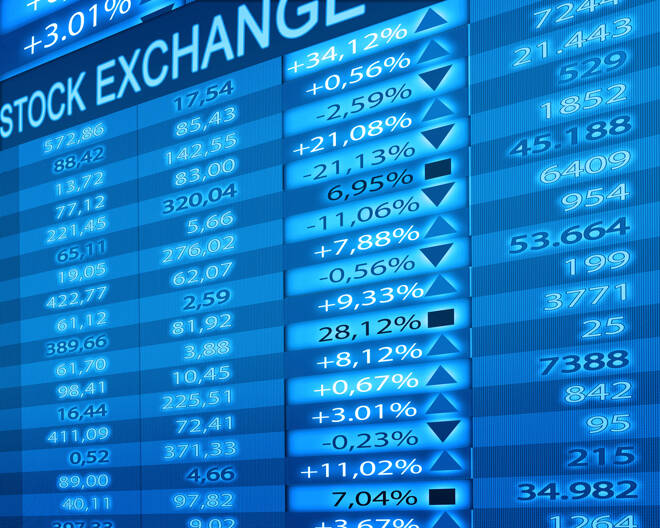Advertisement
Advertisement
Honeywell Tops Q1 Earnings Estimates But Aerospace Sales Decline 22%
By:
Honeywell International Inc, a worldwide technology and manufacturing company, reported a better-than-expected profit in the first quarter but said aerospace sales were down 22% on an organic basis driven by lower commercial aftermarket demand as COVID-19-related travel restrictions and a collapse in air travel hit demand.
Honeywell International Inc, a worldwide technology and manufacturing company, reported a better-than-expected profit in the first quarter but said aerospace sales were down 22% on an organic basis driven by lower commercial aftermarket demand as COVID-19-related travel restrictions and a collapse in air travel hit demand.
The company which makes parts for planes made by Boeing and Airbus SE said its first-quarter EPS was $2.03. Excluding items, the conglomerate earned $1.92 per share, higher than the market expectations of $1.80 per share.
Honeywell sales for the first quarter were flat on a reported basis and down 2% on an organic basis.
Honeywell expects full-year organic sales growth is now expected to be in the range of 3% to 5%. Adjusted earnings per share is expected to be $7.75 to $8.00, up 15 cents from the low end of the prior guidance range.
Despite that Honeywell International shares traded 2.12% lower at 224.39 on Friday.
Analyst Comments
“There were many bright spots in Honeywell (HON) results, including 29% Aero margins, nearly 50% growth in SPS and a solid recovery in HBT. A more moderate forward outlook in Aero and PMT provides a mix headwind vs. improving HBT and SPS momentum and results in a more modest update to annual guidance,” noted Joshua Pokrzywinski, equity analyst at Morgan Stanley.
“HON mix of longer cycle businesses could possibly fit the description of our desirable 1Q outcome of a beat, raise by more than the beat, and higher visibility into 2022, but strength still seems concentrated in the shorter cycle portfolio + Intelligrated. As is typical, we believe there’s plenty of conservatism in guidance but few obvious areas to point to and muster a stronger bull case.”
Honeywell Stock Price Forecast
Ten analysts who offered stock ratings for Honeywell in the last three months forecast the average price in 12 months of $228.56 with a high forecast of $250.00 and a low forecast of $199.00.
The average price target represents a 2.19% increase from the last price of $223.66. Of those ten analysts, six rated “Buy”, four rated “Hold” while none rated “Sell”, according to Tipranks.
Morgan Stanley gave the base target price of $230 with a high of $265 under a bull scenario and $157 under the worst-case scenario. The firm gave an “Equal-weight” rating on the manufacturing company’s stock.
“Honeywell’s (HON) long-cycle businesses should start to recover more substantially later in 2021 with Aero’s trajectory less certain. We expect Aero to remain weak through 2021 as flight hours see sharp declines and maintenance gets deferred until 2022,” Morgan Stanley’s Pokrzywinski.
“The company’s software offerings should be very attractive to customers as digital transformation accelerates post-COVID-19 and we believe this can partially offset the delayed recovery related to the longer cycle core businesses. We see HON’s balance sheet capacity and repatriation potential as attractive, especially given management’s discipline in M&A to appropriately balance growth, value, and disruption.”
Several other analysts have also updated their stock outlook. Honeywell International had its price target upped by JPMorgan to $250 from $200. They currently have an overweight rating on the conglomerate’s stock. Credit Suisse Group increased their price target to $224 from $222 and gave the stock an outperform rating. UBS Group increased their price objective to $216 from $180 and gave the stock a neutral rating.
Upside and Downside Risks
Risks to Upside: 1) Aero growth is stronger than expected with a positive margin mix. 2) PMT orders materialize to M-HSD growth next year – highlighted by Morgan Stanley.
Risks to Downside: 1) Margin expansion slower than expected. 2) Continued inflation and an escalating tariff environment with a lack of offsetting price increases represents a potential headwind.
Check out FX Empire’s earnings calendar
About the Author
Vivek Kumarauthor
Vivek has over five years of experience in working for the financial market as a strategist and economist.
Did you find this article useful?
Latest news and analysis
Advertisement
